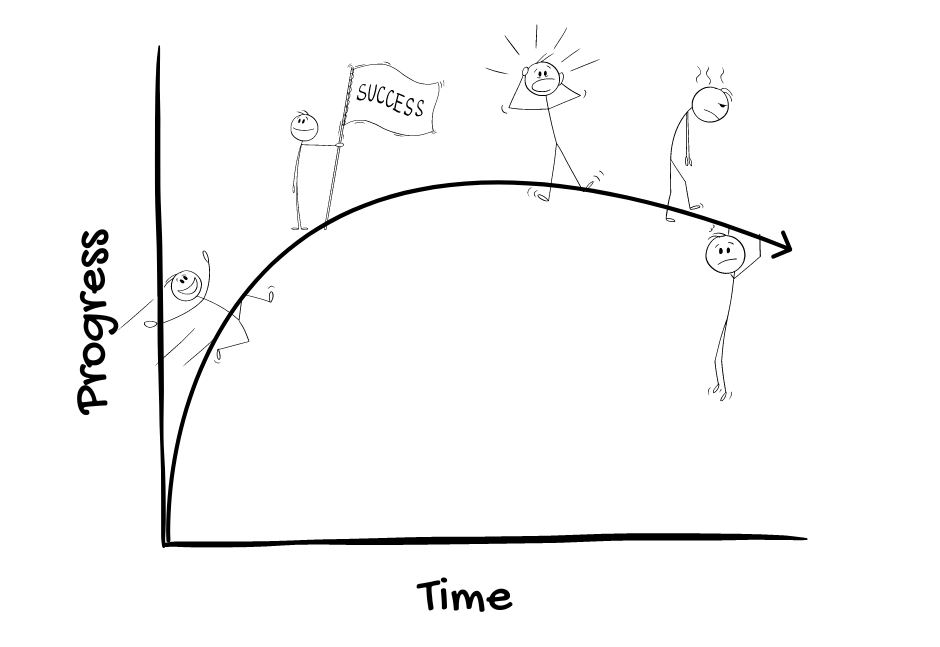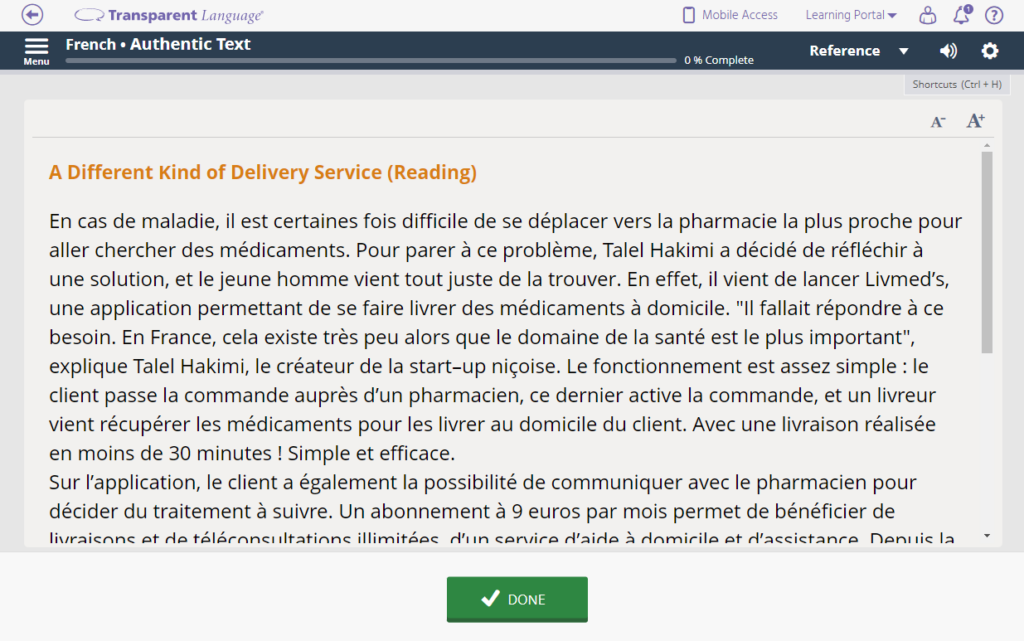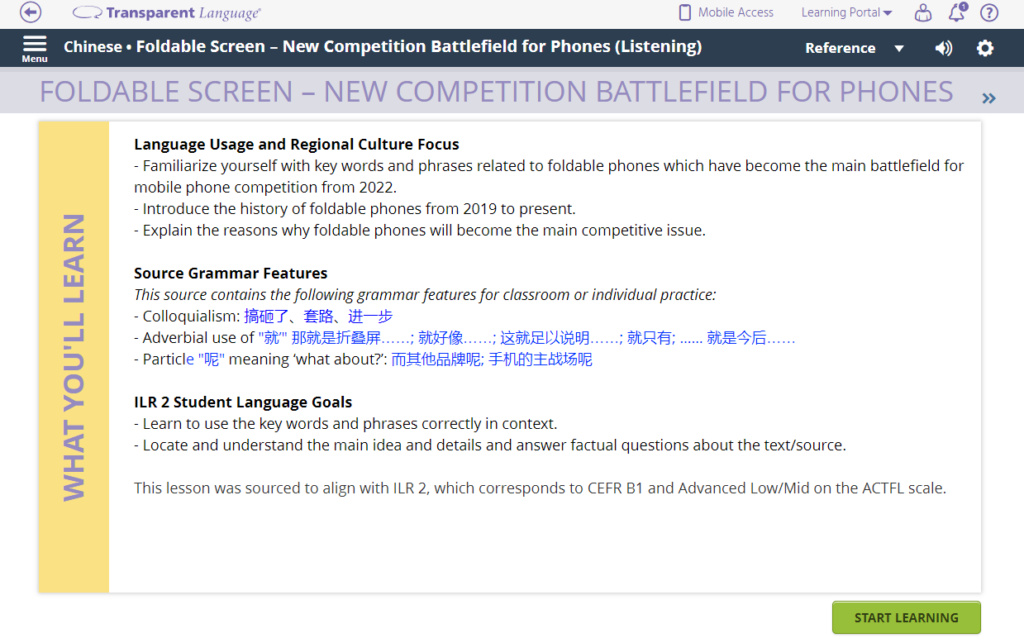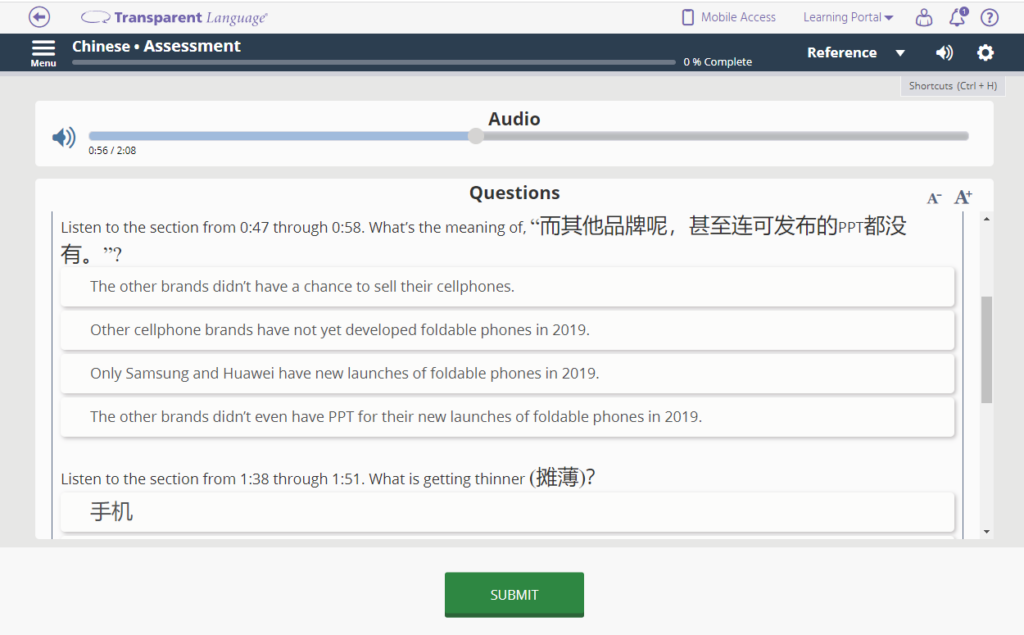Push past the intermediate language plateau with the Real-World Collection Posted by meaghan on Jun 13, 2023 in For Learners, Learning Material Updates
Every language learner will get stuck on the dreaded intermediate plateau.
It’s the point when traditional materials made for learners stop being engaging and effective. But authentic sources (news, podcasts, novels) are still really challenging. You feel like you’ll never improve.

We’ve launched a new collection to fill that gap and get you unstuck. Push past the plateau with the Real-World Collection in Transparent Language Online.
A collection of 50-100+ hours of intermediate and advanced lessons that help you consume more real-world authentic input with confidence. Read the news. Listen to podcasts. Watch YouTube videos. Just like a native speaker.
Available in Arabic, Chinese, Farsi, French, Hebrew, Indonesian, Korean, Pashto, Portuguese, Russian, Spanish, Tagalog, and Urdu*. Sign up now to get your first two weeks free.
How does it work?
You need lots of exposure to the language to reach advanced language proficiency. Which makes sense: “If learners do not receive exposure to the target language, they cannot acquire it.” (Ellis, 2014)
By working with comprehensible input, you can:
- Build vocab. Studies show that vocabulary size is the single most significant contributor to proficiency. The more input you consume (especially if you vary the topics/sources), the more words and phrases you’ll encounter.
- Practice grammar. Encounter grammar rules you’ve learned through textbooks or other explicit resources. Then see how it’s really used in context by native speakers. (Your textbook might teach you “I’m going to…” but you’ll often hear “I’m gonna…”)
- Hear realistic language. Different voices. Realistic speech speed. Informal speech. Speech with background noise. All things you’ll encounter in the real world.
You’ll be able to use those pieces to become a better listener and reader—but also a more confident speaker and writer of the language.
Quantity of input matters. But quality does too. If you’re feeling stuck, you should be looking for materials that are:
- Authentic materials: You could just learn vocab from the dictionary, but that would be terribly boring. And very limiting. Slang. Pop culture references. Abbreviations. Current events. If you want to use the language like a native speaker, you need exposure to how native speakers are using it.
- Comprehensible: Input that’s too easy won’t push you forward. Too hard will be discouraging and counterproductive. To get the most out of a text or audio clip, you should be able to get the gist without looking up every unknown word.
- Interactive: Passively reading or listening won’t cut it. You might get the gist, but advanced proficiency is in the details. This is where the Real-World Collection lessons excel.
What will I learn?
These Real World Collection fills the sweet spot between materials made for learners and authentic materials. You’ll build vocab, grammar, cultural knowledge, etc.—but you’ll also build the skills you need to start consuming authentic materials confidently on your own.
Authentic Sources
Every 1-hour lesson is based on an authentic source from the region, like podcast clips, TV commercials, news articles, and so on. Sources are professionally rated, so you know it’s the right level for you. No time wasted on materials that are too easy or way too hard.
The sources cover topics that will build both your language proficiency and your knowledge of current events and culture. For example, lessons might cover:
- A Korean news article about the ethics of a controversial AI-powered chatbot
- An Arabic YouTube video about a robot in Mecca that provides water for pilgrims
- A Spanish travel blog post about the best festivals throughout Latin America
Each language has roughly 50-100 hours of lessons, 10-25 at each level to help you gradually increase in difficulty.
Comprehensible Input
Speaking of levels… you can choose from 5 of them: Intermediate, Advanced, Advanced-High, Superior, and Distinguished.
| Intermediate | Advanced | Advanced-High | Superior | Distinguished | |
|---|---|---|---|---|---|
| Approx. CEFR Equivalent | A2-B1 | B1-B2 | B2 | C1 | C2 |
| Reading proficiency | You can understand short, predictable texts like routine emails, menus, advertisements, etc. | You’ll be able to understand the main points of straightforward, factual texts on familiar topics. You may still misunderstand the details of the text. | You’ll be able to comfortably understand factual texts on familiar topics, going beyond the main ideas. You’ll also understand more complex texts on topics of interest. | You’ll be able to read a variety of texts on familiar and unfamiliar subjects. You can read between the lines, correctly identifying fact vs, opinion, inferred information, etc. | You’ll be able to analyze long, complex texts and learn to detect sarcasm, allusion, or bias. |
| Listening proficiency | You can understand basic phrases related to familiar, everyday topics provided it is spoken clearly and slowly. | You’ll be able to understand the main points of speech about familiar, everyday topics narrated in past, present, or future. | You’ll be able to understand speech about most routine social and workplace interactions. | You’ll be able to understand technical speech, longer utterances, and fast rates of speech. You’ll also hear beyond the facts to detect emotions and opinions. | You'll be able to comfortably listen to fast-paced conversations on unfamiliar topics. |
| Authentic Sources | Explicit, fact-based Short sentences Ex: - classified ads - recipes - product instructions | Explicit, fact-based Non-technical vocab Ex: - Natural disaster reporting - Election result reporting | In between Advanced and Superior, such as a detailed news report that includes some level of opinion in the form of quotes. | Includes author’s opinion Ex: - political speeches - editorials - literature | More challenging sources on less common subjects Ex: - op-ed on Colombian tax reform - interview with a Russian historian about monopolies |
| Lesson Vocab | - very high-frequency words - short, topic-specific phrases | - primarily single-word items - collocations - grammar patterns - short, topic-specific phrases - extended meaning senses of high-frequency words | - proportionately more collocations and idioms than lower levels - lower-frequency words - more technical, topic-specific terms words with extended meaning senses - grammar patterns | - emphasis on longer phrases, expressions, idioms - complex grammar patterns - extended meaning and connotations - assumed insider cultural information - even lower-frequency words needed to discuss the topic | - figurative language - allusion - satire - rhetorical questions - metaphors |
| Available Languages | Arabic (MSA, Levantine) Chinese Farsi French Indonesian Korean Portuguese Russian Spanish Tagalog | Arabic (Iraqi, Levantine, MSA) Chinese Farsi French Hebrew Korean Pashto Russian Spanish Urdu | Arabic (Iraqi, Levantine, MSA) Chinese Farsi Hebrew Korean Pashto Russian Spanish Urdu | Arabic (Iraqi, Levantine, MSA) Chinese Farsi Hebrew Korean Pashto Russian Spanish Urdu | Chinese Farsi French Russian Spanish |
Lessons increase in difficulty from roughly CEFR A2 to C2 so you can get comfortable consuming media at each level. Lesson vocabulary and activities are customized for each level, so you’re focusing on the words and skills you need most at that level.
Interactive Activities
Speaking of activities, each lesson has 10+ activities that train you on how to interact with challenging authentic input.
In a typical lesson you can expect to:
- master key vocab from the source using listening, speaking, and typing activities
- answer reading or listening comprehension questions to ensure you understood both main ideas and supporting details
- practice transcribing audio clips to finetune your listening skills at realistic speeds
- practice grammar concepts through tables or fill-in-the-blank style challenges
- explore the cultural, societal, and/or historical context of the topic being covered
Ready to get beyond the intermediate plateau? Take the first step with the 2-week free trial. Or find it free at your library!
Ellis, R. (2014). Principles of instructed second language learning. In M. Celce-Murcia, D. Brinton and M. Snow (eds.), teaching English as a second or foreign language (4th ed.) (pp. 31–45). Boston, MA: Cengage Learning.

Build vocabulary, practice pronunciation, and more with Transparent Language Online. Available anytime, anywhere, on any device.







Comments:
Robert Emanuel:
I am writing a novel with the plot in Japan. I stumbled onto Transparent Language while searching for the Japanese equivalent of certain emotions. Your site was helpful, and bears mentioning in my acknowledgements. Thank you. RE